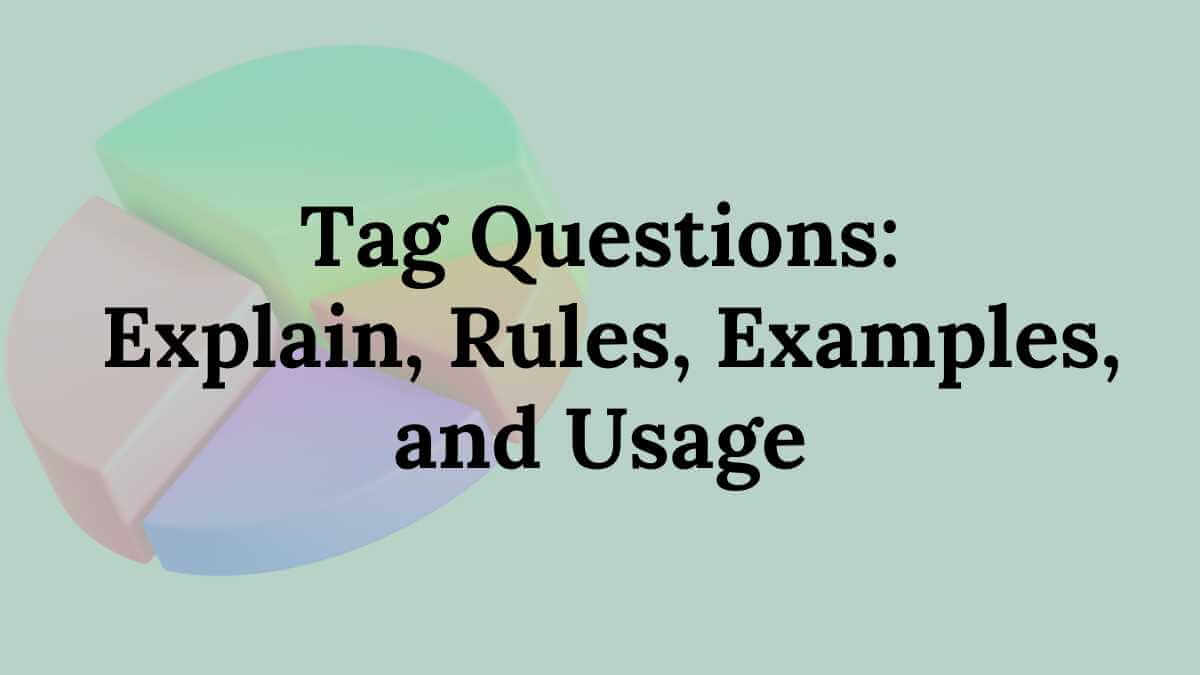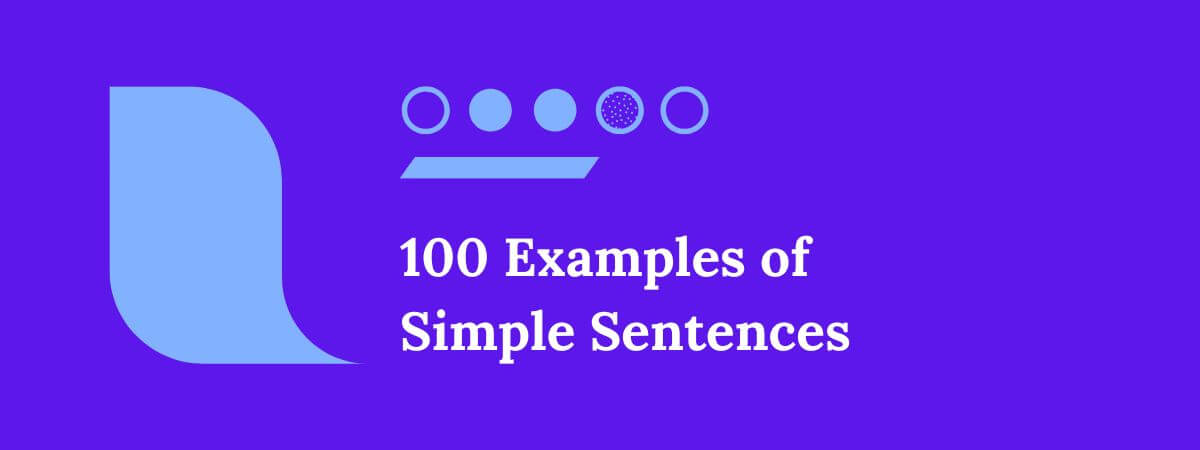Tag questions are short questions added to the end of a sentence, usually to confirm information or seek agreement. They are common in spoken English and can make conversations sound more natural and interactive. In this guide, you will learn how to form tag questions, their meaning, some additional rules, and how to pronounce them correctly.
Forming Tag Questions
Structure:
auxiliary verb + subject pronoun
We use the same auxiliary (helping) verb in the tag as in the main sentence. If there is no auxiliary verb in the main sentence, we use do, does, or did in the tag.
Examples:
- You live in Spain, don’t you?
- She plays the piano, doesn’t she?
- They are coming to the party, aren’t they?
- We should start the meeting, shouldn’t we?
- He can speak French, can’t he?
- Sarah was at the concert, wasn’t she?
Affirmative Sentence → Negative Tag
- If the main sentence is affirmative, the tag is negative.
- You’re learning Spanish, aren’t you?
- He can drive, can’t he?
- They will be here soon, won’t they?
Negative Sentence → Affirmative Tag
If the main sentence is negative, the tag is affirmative.
- You don’t speak Spanish, do you?
- She hasn’t called yet, has she?
- They won’t be late, will they?
When the Main Verb is “Be”
If the main verb in the sentence is a form of be (am, is, are, was, were), we use it in the tag.
- There’s a lot of noise, isn’t there?
- You’re a little late, aren’t you?
- She was at the party, wasn’t she?
- Meaning of Tag Questions
We use tag questions for two main purposes
We use tag questions to confirm facts or seek agreement. They help check if something is correct or invite the listener to agree, making conversations more interactive and natural.
To Confirm or Check Information
We expect the listener to confirm what we said.
- You finished your homework, didn’t you?
- She’s coming with us, isn’t she?
- They’ve booked the tickets, haven’t they?
- We should be there by 6, shouldn’t we?
- He can solve this problem, can’t he?
- You were at the party last night, weren’t you?
- She speaks German, doesn’t she?
- You’ve met John before, haven’t you?
To Ask for Agreement
We already think something is true, and we want the listener to agree.
- This coffee is delicious, isn’t it?
- The weather’s beautiful today, isn’t it?
- That’s a great idea, isn’t it?
- We’re lucky to have this job, aren’t we?
- He’s a talented musician, isn’t he?
- This place is peaceful, isn’t it?
- We made the right decision, didn’t we?
- It’s been a wonderful trip, hasn’t it?
Additional Points and Special Rules
There are several exceptions and special cases when using tag questions.
“I” in the Present Form of Be
If the subject is I and the sentence is affirmative, the auxiliary changes to aren’t in the tag.
- I’m sitting next to you, aren’t I?
- I’m a little early, aren’t I?
With “Let’s”
When the sentence starts with let’s, the tag is shall we?
- Let’s go to the beach, shall we?
- Let’s have a coffee, shall we?
With Imperatives
When giving an instruction or command, the tag will usually be ” you?
- Close the window, will you?
- Hold this, will you?
After Negative Words
If a sentence contains a negative word such as never, hardly, or nobody, we use an affirmative tag.
- Nobody lives in this house, do they?
- You’ve never liked me, have you?
When the Subject is “Nothing”
If the subject is nothing, we use it in the tag.
- Nothing bad happened, did it?
- Nothing ever changes, does it?
With Indefinite Pronouns
If the subject is nobody, somebody, everybody, no one, someone, or everyone, we use they in the tag.
- Nobody asked for me, did they?
- Someone left their bag, didn’t they?
When “Have” is the Main Verb
If have is the main verb (not an auxiliary), it’s more common to use do in the tag.
- You have a Ferrari, don’t you?
- She had a great time, didn’t she?
With “Used to”
When using used to, we use didn’t in the tag.
- You used to work here, didn’t you?
- He used to have long hair, didn’t he?
Affirmative Tag After Affirmative Sentence
We can use an affirmative tag after an affirmative sentence to express surprise, interest, or irony.
- You’re moving to Brazil, are you?
- She’s the new manager, is she?
Pronunciation of Tag Questions
The meaning of a tag question can change depending on intonation.
Rising Intonation (↗)
We use rising intonation when we are not sure about the answer, and it’s a real question.
- You haven’t seen my phone, have you? ↗
- She isn’t from London, is she? ↗
- They don’t work here, do they? ↗
- He can’t drive, can he? ↗
- You didn’t call me last night, did you? ↗
- We aren’t meeting today, are we? ↗
Falling Intonation (↘)
We use falling intonation when we already know the answer and just want confirmation.
- You haven’t seen my phone, have you? ↗
- This cake tastes amazing, doesn’t it? ↘
- You were at the meeting, weren’t you? ↘
- She’s very talented, isn’t she? ↘
- We’ve had a great time, haven’t we? ↘
- It’s a beautiful day, isn’t it? ↘
- He’s the new manager, isn’t he? ↘
Quick Tips for Using Tag Questions Naturally
- Use them in conversation, not in formal writing.
- Match the tense of the tag to the main sentence.
- Listen to native speakers to learn intonation patterns.
- Practice both affirmative and negative forms.
- Be aware of exceptions like “aren’t I?” and “shall we?”
Practice Exercise
- He can play the guitar, ______?
- You haven’t finished yet, ______?
- She was born in Canada, ______?
- We should leave early, ______?
- They don’t know the answer, ______?
- This is your book, ______?
- You’ll help me, ______?
- Nobody called you, ______?
- I’m a bit late, ______?
- She’s been here before, ______?
- Let’s take a break, ______?
- You saw him yesterday, ______?
- They won’t be late, ______?
- We’ve met before, ______?
- Nothing happened, ______?
Answers:
- can’t he?
- have you?
- wasn’t she?
- shouldn’t we?
- do they?
- isn’t it?
- won’t you?
- did they?
- aren’t I?
- hasn’t she?
- shall we?
- didn’t you?
- will they?
- haven’t we?
- did it?
Here is where you can test your tag question skills.
Conclusion
Tag questions are a useful tool in English for confirming information, checking facts, or inviting agreement. By learning their structure, meanings, and pronunciation patterns, you can make your English sound more natural and engaging. Remember to pay attention to intonation, as it can completely change the meaning of your question.
With practice, you’ll be able to use tag questions confidently in everyday conversations, making your speech sound more fluent and connected.

